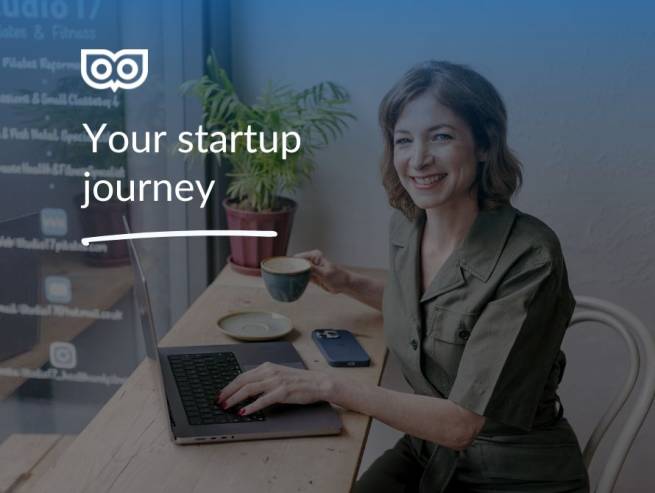
Insights from working with two types of startups
Yes, we work with startups too! We have intro packages and provide lots of marketing training and support.
One simple question we ask among the pre-meeting questions:
Are you funding your business yourself, or are you getting external funding from VCs/Investors?
We’ve worked with startups a lot over the last 22 years. While many of our clients are what I call “established businesses” it seems every week we are also talking to 2-3 “startups”. People in the early stages, just a little bit beyond “a whim” come to us to explore the marketing support possibilities.
I’ve had to explain many times to those who advise us, for us at TLD, the startup world is divided into 2 categories. So many assume we’re in the “funded” game. In fact – the people I am meeting are usually from the self-funded category.
If you’re at the precipice of starting a business, it helps to understand the choice you’re making and the path you’re taking.
Let’s explore!
VC/Inversor Funded
The usual trajectory is that a person creates a business plan to answer all the questions and reassure potential investors. After that, it’s pounding the pavements, networking, getting the word out there. Once seed funding is secured, they can get started. Their initial money could be invested in the things we do – branding, website, content marketing – and they also factor in the other startup costs of creating their products and getting them to market.
Pros: this works well for some people!
And this list is great if you are ready to work, and want to grow bigger, sooner!
Financial: For these people, the money is just bigger. Venture capital (VC) funding provides substantial capital for growth, allowing startups to scale rapidly.
Expertise and network: VCs often bring industry expertise, mentorship, and valuable connections to the table – accelerating learning and hopefully avoiding typical mistakes, that others may have learned “the hard way”.
Validation: VC funding validates your business idea, making it attractive to other investors and potential customers. Once you break the seal, it becomes easier.
Accelerated growth: With VC backing, once it comes through, we can be all hands on deck! Startups can accelerate product development, marketing, and expansion. For us it means we can press go on several projects – branding, website, and more.
Sounds good right? But here are the cons:
Equity dilution: VCs take a share of ownership, diluting the founder’s percentage of ownership.
Pressure to perform: You’re now accountable to those who hold the purse strings, which can feel pressured, and like a “job”. Some people like this accountability, but others feel that there is low patience and high expectations from investors. Their growth targets are usually more aggressive.
Loss of control: VCs may influence strategic decisions, impacting the founder’s autonomy and taking away from the excitement of doing something on your own, creatively.
Exit expectations: VCs expect an exit (IPO or acquisition) within a specific timeframe. And more than 90% of the time, things will take longer. After all it takes time to build awareness, educate your audience, and allow them to learn about you enough to trust you.
If you are going to go down this route – we’ll know to be patient.
When we speak to people about their new business ideas, we get excited. Our creativity starts whirring. We’re scoping the site map, laying out the basics in our minds, and already ideas for content are coming.
But this doesn’t mean we can begin soon. We just need to document the ideas, bottle the magic, and keep it ready for when the investors have caught up with the vision.
Often, we help clients by providing them with proposals so they can incorporate all that into their business plans. Anyone choosing to go down this route should be ready to share detailed financials, business plans, and growth projections. Success depends on the startup’s execution, market conditions, and team.
Self-Funded Model:
The most common type of business model we encounter is what I call the consultancy business model. Someone who is an expert in their field, helping others achieve their goals in that part of their lives – and often these are B2B (working with other businesses end entrepreneurs)
What’s good about it?
It’s the way I have built my business, I feel it’s less risky. You may call it “bootstrapping”. And, to compare with the above, a person choosing this model gets:
Autonomy: Founders retain full control over their business. You can design your business as you like to fit your lifestyle. This doesn’t mean less work, but it means the time you work and the things you focus on can fit your experience, tastes, and schedule. Not enough people think this through.
No equity Loss: As above, there is no dilution of ownership. This means all the money you make can go back into your business. None will be allocated now or in the future to anything but your business expenses – which can grow as your income grows.
Flexible decision-making: Freedom to pivot and adapt without external pressure.
Long-term vision: With this, you focus on sustainable growth rather than rapid scaling. You can think of this business existing 5, 10, etc years. You can try to predict
“what will my earnings/turnover be in the first 12 months?
What about in the 2nd year?
It can be a business just for you or people in your family can learn and continue the legacy.
Sometimes, there’s suffering
However, it’s not smooth sailing. it never is for startups! Many people do end up “going back to work” and joining a company. Some have a good run of it, a couple of our clients ran their businesses for 20 years before they decided to take the comfort of a job. And by comparison, life at the bigger company has usually been more balanced!
To break it down
Limited resources: Meaning, usually, not enough money. Not enough time. No one to help you. All of this is mixed up.
Slower growth: Bootstrapped startups often grow at a slower pace. Most of the time growth is slower than you’d expect (we see it a lot as we move clients forward with projects). Rarely is it quick, though some are better than others at the hustle habit. You have to build your brand, with limited time and resources. This takes a lot of time, just on that front – content creation, networking, follow-ups, and pitching. And that’s before you ever get paid!
Risk of burnout: when you start a self-funded business, there’s pressure. Often, the money you have is going to run out. You need to think not only about “what am I selling” but also about how you’ll convince people to buy, the pricing of your products or services, profit margins, and the value of your time. Then there’s marketing (we are pretty good at taking the load off our clients, but they still need to be there for feedback and decisions).
And you need to pay attention along the way, testing and measuring. This rarely lets up – so some do risk overdoing it, which leads to burnout. Eek!
If you are going to go down this route – prepare for the long haul.
Advice and tips from us
5 case studies: We recommend you find 5 initial clients and give them a good deal but one that still protects your time. You’ll be able to finesse your process, earn some money, and understand your market better. And they will be the ones who give you those all-important case studies and testimonials, needed for your credibility and brand building.
Bootstrap efficiently: Logical right? But many get this wrong and go down crazy rabbit holes. It’s important to take a bird’s eye view. Prioritise essential expenses and avoid unnecessary overhead. What’s essential? Think MVP. Minimum viable product. It could be just a simple holding page with a mailing list sign-up. I wrote a post specifically for this – check it out!
Build a strong network: Yes, it means connecting with people more, in person and online, and using your existing personal connections for support, collaboration, and introductions.


